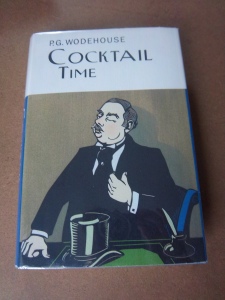It felt fitting to end the year on a cozy mystery, so I went back to Carolyn G. Hart’s Death on Demand series. It’s another one where I am waaay behind; this is number four out of twenty-two and counting. In Honeymoon with Murder, Annie has just tied the knot with Max when she gets a frantic midnight call from her employee and matron of honor, Ingrid. The couple arrive at her house to find the warm corpse of Jesse Penrick; Ingrid is nowhere to be seen.
 Jesse loved to spy on his neighbors and make their lives miserable, so no one is sad to see him dead; unfortunately for the missing Ingrid, however, he had picked fight with her just that morning. This makes her look like a pretty good suspect to conceited mainland circuit solicitor Posey, filling in while the local chief is on vacation. It’s up to Ingrid’s friends, led by Annie, Max, and the indefatigable Hetty, to prove her innocence and find both her and the real killer.
Jesse loved to spy on his neighbors and make their lives miserable, so no one is sad to see him dead; unfortunately for the missing Ingrid, however, he had picked fight with her just that morning. This makes her look like a pretty good suspect to conceited mainland circuit solicitor Posey, filling in while the local chief is on vacation. It’s up to Ingrid’s friends, led by Annie, Max, and the indefatigable Hetty, to prove her innocence and find both her and the real killer.
We get a body early on here, much better than in the last one, but there are still plenty of suspects and plenty of clues. Even those who are not murderers have things to hide, which is where Max and Hetty’s information-gathering skills come in handy. All of the bluff, bluster, and breaking-and-entering, though, fall to Annie. Carolyn Hart plays fair, so that the mystery-solving experience is challenging and rewarding. I never feel like she is pulling the rug out from under the readers.
Hetty started out in the first two books as annoying, before she proved her sleuthing skills to Annie and Max. Max’s mother Laurel picked up the banner in the last book and still comes across as annoying rather than humorous; I think Carolyn Hart was going for a blend but I can’t quite be sure. I have a feeling she will continue to pop up in the series.
The constant name-dropping of detectives, titles, and authors still hasn’t gotten old yet, though Hetty and Annie must have cart catalogs for brains. In fact, I found myself writing down a few interesting-sounding references to look up for later on, like Anne Morice. I believe my favorite was when Annie posed as a reporter and chose the pseudonym Beverly Gray.
Sometimes I forget how old these books are, though the lack of Internet-based research should be a giveaway. I didn’t even look at the date (1988) until it was mentioned that two of the older characters served in WWII. The series seems to have aged very well so far. I’m curious how much Max and Annie actually age over the course of it.




